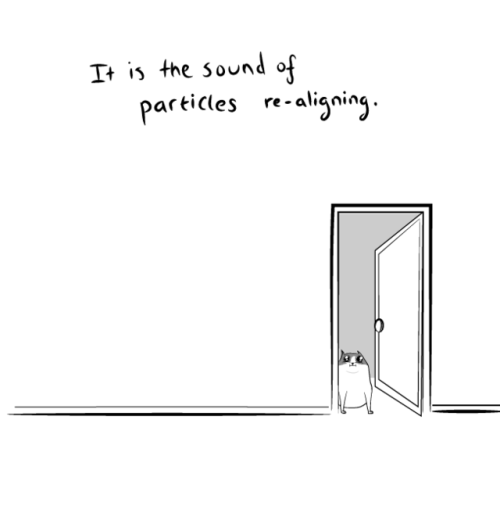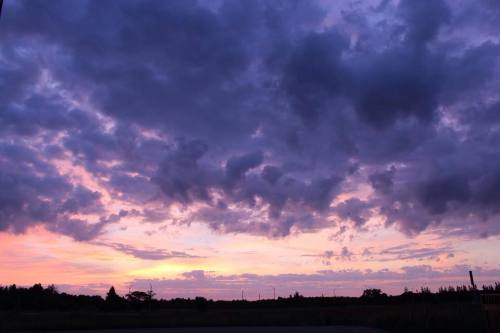I'm a proud Aryan. My parents are my God! My religion is humanity! The Sanatana!
126 posts
Latest Posts by abhishekmishraw - Page 3
"Nadaan Parindey Ghar Aaja (Full Song) Rockstar" | Ranbir Kapoor
When Dead Stars Collide!
Gravity has been making waves - literally. Earlier this month, the Nobel Prize in Physics was awarded for the first direct detection of gravitational waves two years ago. But astronomers just announced another huge advance in the field of gravitational waves - for the first time, we’ve observed light and gravitational waves from the same source.

There was a pair of orbiting neutron stars in a galaxy (called NGC 4993). Neutron stars are the crushed leftover cores of massive stars (stars more than 8 times the mass of our sun) that long ago exploded as supernovas. There are many such pairs of binaries in this galaxy, and in all the galaxies we can see, but something special was about to happen to this particular pair.

Each time these neutron stars orbited, they would lose a teeny bit of gravitational energy to gravitational waves. Gravitational waves are disturbances in space-time - the very fabric of the universe - that travel at the speed of light. The waves are emitted by any mass that is changing speed or direction, like this pair of orbiting neutron stars. However, the gravitational waves are very faint unless the neutron stars are very close and orbiting around each other very fast.

As luck would have it, the teeny energy loss caused the two neutron stars to get a teeny bit closer to each other and orbit a teeny bit faster. After hundreds of millions of years, all those teeny bits added up, and the neutron stars were *very* close. So close that … BOOM! … they collided. And we witnessed it on Earth on August 17, 2017.

Credit: National Science Foundation/LIGO/Sonoma State University/A. Simonnet
A couple of very cool things happened in that collision - and we expect they happen in all such neutron star collisions. Just before the neutron stars collided, the gravitational waves were strong enough and at just the right frequency that the National Science Foundation (NSF)’s Laser Interferometer Gravitational-Wave Observatory (LIGO) and European Gravitational Observatory’s Virgo could detect them. Just after the collision, those waves quickly faded out because there are no longer two things orbiting around each other!
LIGO is a ground-based detector waiting for gravitational waves to pass through its facilities on Earth. When it is active, it can detect them from almost anywhere in space.

The other thing that happened was what we call a gamma-ray burst. When they get very close, the neutron stars break apart and create a spectacular, but short, explosion. For a couple of seconds, our Fermi Gamma-ray Telescope saw gamma-rays from that explosion. Fermi’s Gamma-ray Burst Monitor is one of our eyes on the sky, looking out for such bursts of gamma-rays that scientists want to catch as soon as they’re happening.
And those gamma-rays came just 1.7 seconds after the gravitational wave signal. The galaxy this occurred in is 130 million light-years away, so the light and gravitational waves were traveling for 130 million years before we detected them.

After that initial burst of gamma-rays, the debris from the explosion continued to glow, fading as it expanded outward. Our Swift, Hubble, Chandra and Spitzer telescopes, along with a number of ground-based observers, were poised to look at this afterglow from the explosion in ultraviolet, optical, X-ray and infrared light. Such coordination between satellites is something that we’ve been doing with our international partners for decades, so we catch events like this one as quickly as possible and in as many wavelengths as possible.

Astronomers have thought that neutron star mergers were the cause of one type of gamma-ray burst - a short gamma-ray burst, like the one they observed on August 17. It wasn’t until we could combine the data from our satellites with the information from LIGO/Virgo that we could confirm this directly.

This event begins a new chapter in astronomy. For centuries, light was the only way we could learn about our universe. Now, we’ve opened up a whole new window into the study of neutron stars and black holes. This means we can see things we could not detect before.

The first LIGO detection was of a pair of merging black holes. Mergers like that may be happening as often as once a month across the universe, but they do not produce much light because there’s little to nothing left around the black hole to emit light. In that case, gravitational waves were the only way to detect the merger.

Image Credit: LIGO/Caltech/MIT/Sonoma State (Aurore Simonnet)
The neutron star merger, though, has plenty of material to emit light. By combining different kinds of light with gravitational waves, we are learning how matter behaves in the most extreme environments. We are learning more about how the gravitational wave information fits with what we already know from light - and in the process we’re solving some long-standing mysteries!
Want to know more? Get more information HERE.
Make sure to follow us on Tumblr for your regular dose of space: http://nasa.tumblr.com
Gift A Tree
Tor Ek Kothaye | বেশ করেছি প্রেম করেছি | Jeet | Koel | Raja Chanda | Jee...
https://twitter.com/ENERGY/status/919946289197887488?s=09
Check out @ENERGY’s Tweet:
https://twitter.com/Techfest_IITB/status/919574071309770752?s=09
Check out @Techfest_IITB’s Tweet:
twenty one pilots: Heathens (from Suicide Squad: The Album) [OFFICIAL VI...
Inhabitat: Google will be powered by 100% renewable energy by 2018.
The Times of India: A blot that no Indian university is among world’s top 500: PM Modi.
Pinpointing the Cause of Earth’s Recent Record CO2 Spike
A new NASA study provides space-based evidence that Earth’s tropical regions were the cause of the largest annual increases in atmospheric carbon dioxide concentration seen in at least 2,000 years.
What was the cause of this?
Scientists suspect that the 2015-2016 El Niño – one of the largest on record – was responsible. El Niño is a cyclical warming pattern of ocean circulation in the Pacific Ocean that affects weather all over the world. Before OCO-2, we didn’t have enough data to understand exactly how El Nino played a part.

Analyzing the first 28 months of data from our Orbiting Carbon Observatory (OCO-2) satellite, researchers conclude that impacts of El Niño-related heat and drought occurring in the tropical regions of South America, Africa and Indonesia were responsible for the record spike in global carbon dioxide.

These three tropical regions released 2.5 gigatons more carbon into the atmosphere than they did in 2011. This extra carbon dioxide explains the difference in atmospheric carbon dioxide growth rates between 2011 and the peak years of 2015-16.

In 2015 and 2016, OCO-2 recorded atmospheric carbon dioxide increases that were 50% larger than the average increase seen in recent years preceding these observations.

In eastern and southern tropical South America, including the Amazon rainforest, severe drought spurred by El Niño made 2015 the driest year in the past 30 years. Temperatures were also higher than normal. These drier and hotter conditions stressed vegetation and reduced photosynthesis, meaning trees and plants absorbed less carbon from the atmosphere. The effect was to increase the net amount of carbon released into the atmosphere.

In contrast, rainfall in tropical Africa was at normal levels, but ecosystems endured hotter-than-normal temperatures. Dead trees and plants decomposed more, resulting in more carbon being released into the atmosphere.

Meanwhile, tropical Asia had the second-driest year in the past 30 years. Its increased carbon release, primarily from Indonesia, was mainly due to increased peat and forest fires - also measured by satellites.

We knew El Niños were one factor in these variations, but until now we didn’t understand, at the scale of these regions, what the most important processes were. OCO-2’s geographic coverage and data density are allowing us to study each region separately.
Why does the amount of carbon dioxide in our atmosphere matter?
The concentration of carbon dioxide in Earth’s atmosphere is constantly changing. It changes from season to season as plants grow and die, with higher concentrations in the winter and lower amounts in the summer. Annually averaged atmospheric carbon dioxide concentrations have generally increased year over year since the 1800s – the start of the widespread Industrial Revolution. Before then, Earth’s atmosphere naturally contained about 595 gigatons of carbon in the form of carbon dioxide. Currently, that number is 850 gigatons.

Carbon dioxide is a greenhouse gas, which means that it can trap heat. Since greenhouse gas is the principal human-produced driver of climate change, better understanding how it moves through the Earth system at regional scales and how it changes over time are important aspects to monitor.

Get more information about these data HERE.
Make sure to follow us on Tumblr for your regular dose of space: http://nasa.tumblr.com.
13 Reasons to Have an Out-of-This-World Friday (the 13th)
1. Not all of humanity is bound to the ground

Since 2000, the International Space Station has been continuously occupied by humans. There, crew members live and work while conducting important research that benefits life on Earth and will even help us eventually travel to deep space destinations, like Mars.
2. We’re working to develop quieter supersonic aircraft that would allow you to travel from New York to Los Angeles in 2 hours

We are working hard to make flight greener, safer and quieter – all while developing aircraft that travel faster, and building an aviation system that operates more efficiently. Seventy years after Chuck Yeager broke the sound barrier in the Bell X-1 aircraft, we’re continuing that supersonic X-plane legacy by working to create a quieter supersonic jet with an aim toward passenger flight.
3. The spacecraft, rockets and systems developed to send astronauts to low-Earth orbit as part of our Commercial Crew Program is also helping us get to Mars
Changes to the human body during long-duration spaceflight are significant challenges to solve ahead of a mission to Mars and back. The space station allows us to perform long duration missions without leaving Earth’s orbit.

Although they are orbiting Earth, space station astronauts spend months at a time in near-zero gravity, which allows scientists to study several physiological changes and test potential solutions. The more time they spend in space, the more helpful the station crew members can be to those on Earth assembling the plans to go to Mars.
4. We’re launching a spacecraft in 2018 that will go “touch the Sun”

In the summer of 2018, we’re launching Parker Solar Probe, a spacecraft that will get closer to the Sun than any other in human history. Parker Solar Probe will fly directly through the Sun’s atmosphere, called the corona. Getting better measurements of this region is key to understanding our Sun.
For instance, the Sun releases a constant outflow of solar material, called the solar wind. We think the corona is where this solar wind is accelerated out into the solar system, and Parker Solar Probe’s measurements should help us pinpoint how that happens.
5. You can digitally fly along with spacecraft…that are actually in space…in real-time!

NASA’s Eyes are immersive, 3D simulations of real events, spacecraft locations and trajectories. Through this interactive app, you can experience Earth and our solar system, the universe and the spacecraft exploring them. Want to watch as our Juno spacecraft makes its next orbit around Juno? You can! Or relive all of the Voyager mission highlights in real-time? You can do that too! Download the free app HERE to start exploring.
6. When you feel far away from home, you can think of the New Horizons spacecraft as it heads toward the Kuiper Belt, and the Voyager spacecraft are beyond the influence of our sun…billions of miles away

Our New Horizons spacecraft completed its Pluto flyby in July 2015 and has continued on its way toward the Kuiper Belt. The spacecraft continues to send back important data as it travels toward deeper space at more than 32,000 miles per hour, and is ~3.2 billion miles from Earth.

In addition to New Horizons, our twin Voyager 1 and 2 spacecraft are exploring where nothing from Earth has flown before. Continuing on their more-than-37-year journey since their 1977 launches, they are each much farther away from Earth and the sun than Pluto. In August 2012, Voyager 1 made the historic entry into interstellar space, the region between the stars, filled with material ejected by the death of nearby stars millions of years ago.
7. There are humans brave enough to not only travel in space, but venture outside space station to perform important repairs and updates during spacewalks

Just this month (October 2017) we’ve already had two spacewalks on the International Space Station…with another scheduled on Oct. 20.
Spacewalks are important events where crew members repair, maintain and upgrade parts of the International Space Station. These activities can also be referred to as EVAs – Extravehicular Activities. Not only do spacewalks require an enormous amount of work to prepare for, but they are physically demanding on the astronauts. They are working in the vacuum of space in only their spacewalking suit.
8. Smart people are up all night working in control rooms all over NASA to ensure that data keeps flowing from our satellites and spacecraft

Our satellites and spacecraft help scientists study Earth and space. Missions looking toward Earth provide information about clouds, oceans, land and ice. They also measure gases in the atmosphere, such as ozone and carbon dioxide and the amount of energy that Earth absorbs and emits. And satellites monitor wildfires, volcanoes and their smoke.
9. A lot of NASA-developed tech has been transferred for use to the public
Our Technology Transfer Program highlights technologies that were originally designed for our mission needs, but have since been introduced to the public market. HERE are a few spinoff technologies that you might not know about.
10. We have a spacecraft currently traveling to an asteroid to collect a sample and bring it back to Earth

OSIRIS-REx is our first-ever mission that will travel to an asteroid and bring a sample of it back to Earth. Currently, the spacecraft is on its way to asteroid Bennu where it will survey and map the object before it “high-fives” the asteroid with its robotic arm to collect a sample, which it will send to Earth.
If everything goes according to plan, on Sept. 24, 2023, the capsule containing the asteroid sample will make a soft landing in the Utah desert.
11. There are Earth-sized planets outside our solar system that may be habitable
To date, we have confirmed 3,000+ exoplanets, which are planets outside our solar system that orbit a Sun-like star. Of these 3,000, some are in the habitable zone – where the temperature is just right for liquid water to exist on the surface.

Recently, our Spitzer Space Telescope revealed the first known system of SEVEN Earth-size planets around a single star. Three of these plants are firmly in the habitable zone, and could have liquid water on the surface, which is key to life as we know it.
12. Earth looks like art from space

In 1960, the United States put its first Earth-observing environmental satellite into orbit around the planet. Over the decades, these satellites have provided invaluable information, and the vantage point of space has provided new perspectives on Earth.

The beauty of Earth is clear, and the artistry ranges from the surreal to the sublime.
13. We’re building a telescope that will be able to see the first stars ever formed in the universe

Wouldn’t it be neat to see a period of the universe’s history that we’ve never seen before? That’s exactly what the James Webb Space Telescope (JWST) will be able to do…plus more!
Specifically, Webb will see the first objects that formed as the universe cooled down after the Big Bang. We don’t know exactly when the universe made the first stars and galaxies – or how for that matter. That is what we are building Webb to help answer.
Happy Friday the 13th! We hope it’s out-of-this-world!
Make sure to follow us on Tumblr for your regular dose of space: http://nasa.tumblr.com.








More comics here.
Official Song of the FIFA U17 World Cup India 2017 - Kar Ke Dikhla De Goal
Varroc Lighting Systems design animation an new era in lighting syatem.
Green Day - Still Breathing (Official Music Video)

(via Winston Churchill Starved 3 Million Indians to Death in the Man-Made Bengal Famine of 1943)
Cassini Mission: What’s Next?
It’s Friday, Sept. 15 and our Cassini mission has officially come to a spectacular end. The final signal from the spacecraft was received here on Earth at 7:55 a.m. EDT after a fateful plunge into Saturn’s atmosphere.

After losing contact with Earth, the spacecraft burned up like a meteor, becoming part of the planet itself.

Although bittersweet, Cassini’s triumphant end is the culmination of a nearly 20-year mission that overflowed with discoveries.
But, what happens now?
Mission Team and Data
Now that the spacecraft is gone, most of the team’s engineers are migrating to other planetary missions, where they will continue to contribute to the work we’re doing to explore our solar system and beyond.

Mission scientists will keep working for the coming years to ensure that we fully understand all of the data acquired during the mission’s Grand Finale. They will carefully calibrate and study all of this data so that it can be entered into the Planetary Data System. From there, it will be accessible to future scientists for years to come.

Even beyond that, the science data will continue to be worked on for decades, possibly more, depending on the research grants that are acquired.
Other team members, some who have spent most of their career working on the Cassini mission, will use this as an opportunity to retire.
Future Missions
In revealing that Enceladus has essentially all the ingredients needed for life, the mission energized a pivot to the exploration of “ocean worlds” that has been sweeping planetary science over the past couple of decades.

Jupiter’s moon Europa has been a prime target for future exploration, and many lessons during Cassini’s mission are being applied in planning our Europa Clipper mission, planned for launch in the 2020s.

The mission will orbit the giant planet, Jupiter, using gravitational assists from large moons to maneuver the spacecraft into repeated close encounters, much as Cassini has used the gravity of Titan to continually shape the spacecraft’s course.
In addition, many engineers and scientists from Cassini are serving on the new Europa Clipper mission and helping to shape its science investigations. For example, several members of the Cassini Ion and Neutral Mass Spectrometer team are developing an extremely sensitive, next-generation version of their instrument for flight on Europa Clipper. What Cassini has learned about flying through the plume of material spraying from Enceladus will be invaluable to Europa Clipper, should plume activity be confirmed on Europa.

In the decades following Cassini, scientists hope to return to the Saturn system to follow up on the mission’s many discoveries. Mission concepts under consideration include robotic explorers to drift on the methane seas of Titan and fly through the Enceladus plume to collect and analyze samples for signs of biology.

Atmospheric probes to all four of the outer planets have long been a priority for the science community, and the most recent recommendations from a group of planetary scientists shows interest in sending such a mission to Saturn. By directly sampling Saturn’s upper atmosphere during its last orbits and final plunge, Cassini is laying the groundwork for an potential Saturn atmospheric probe.

A variety of potential mission concepts are discussed in a recently completed study — including orbiters, flybys and probes that would dive into Uranus’ atmosphere to study its composition. Future missions to the ice giants might explore those worlds using an approach similar to Cassini’s mission.
Learn more about the Cassini mission and its Grand Finale HERE.
Follow the mission on Facebook and Twitter for the latest updates.
Make sure to follow us on Tumblr for your regular dose of space: http://nasa.tumblr.com.
After 20 years in space, the Cassini spacecraft is running out of fuel. In 2010, Cassini began a seven-year mission extension in which the plan was to expend all of the spacecraft’s propellant exploring Saturn and its moons. This led to the Grand Finale and ends with a plunge into the planet’s atmosphere at 6:32 a.m. EDT on Friday, Sept. 15.
The spacecraft will ram through Saturn’s atmosphere at four times the speed of a re-entry vehicle entering Earth’s atmosphere, and Cassini has no heat shield. So temperatures around the spacecraft will increase by 30-to-100 times per minute, and every component of the spacecraft will disintegrate over the next couple of minutes…
Cassini’s gold-colored multi-layer insulation blankets will char and break apart, and then the spacecraft’s carbon fiber epoxy structures, such as the 11-foot (3-meter) wide high-gain antenna and the 30-foot (11-meter) long magnetometer boom, will weaken and break apart. Components mounted on the outside of the central body of the spacecraft will then break apart, followed by the leading face of the spacecraft itself.
Make sure to follow us on Tumblr for your regular dose of space: http://nasa.tumblr.com.

n i g h t v i s i o n
Female friendships that work are relationships in which women help each other to belong to themselves.
We cannot see the shape of the secret future, and uncertainty brings worry. Our lives look overwhelming when we lose the focus of today.
When we stop living in the here and now, our problems become magnified unreasonably.
Treat all disasters as if they were trivialities but never treat a triviality as if it were a disaster.


Nice punch.
A timid person is frightened before a danger, a coward during the time, and a courageous person afterward.
After 20 years in space, the Cassini spacecraft is running out of fuel. In 2010, Cassini began a seven-year mission extension in which the plan was to expend all of the spacecraft’s propellant exploring Saturn and its moons. This led to the Grand Finale and ends with a plunge into the planet’s atmosphere at 6:32 a.m. EDT on Friday, Sept. 15.
The spacecraft will ram through Saturn’s atmosphere at four times the speed of a re-entry vehicle entering Earth’s atmosphere, and Cassini has no heat shield. So temperatures around the spacecraft will increase by 30-to-100 times per minute, and every component of the spacecraft will disintegrate over the next couple of minutes…
Cassini’s gold-colored multi-layer insulation blankets will char and break apart, and then the spacecraft’s carbon fiber epoxy structures, such as the 11-foot (3-meter) wide high-gain antenna and the 30-foot (11-meter) long magnetometer boom, will weaken and break apart. Components mounted on the outside of the central body of the spacecraft will then break apart, followed by the leading face of the spacecraft itself.
Make sure to follow us on Tumblr for your regular dose of space: http://nasa.tumblr.com.


bhagat singh zindabad!

